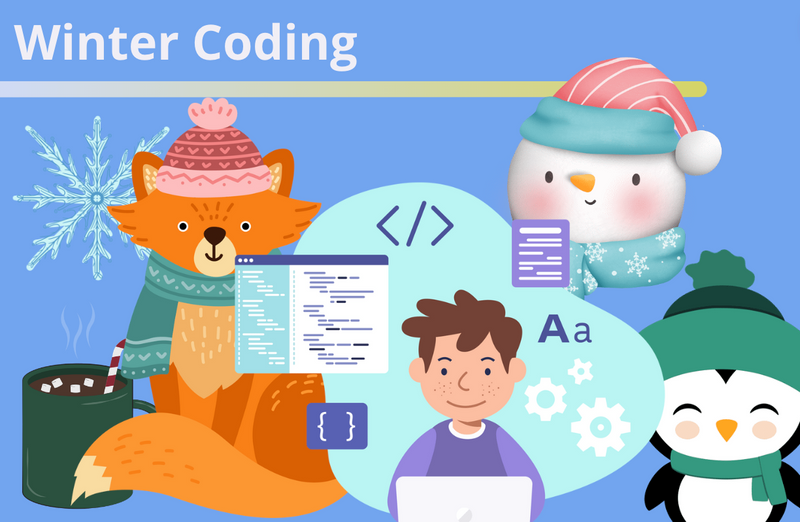Excited to learn some advanced Scratch coding tips for making games and animations? You're in the right place! These tips are a great way to expand your student's creativity and make their Scratch projects more complicated.
Once your child has mastered the basics of coding with Scratch, you might notice that there are plenty of other blocks to explore. Even if you’re not familiar with Scratch yourself, you can support your child’s coding practice by familiarizing yourself with some of the more complex code blocks.
If you are just getting started with coding, learn Scratch coding with our article about what Scratch is and how to code with Scratch. Or join an award-winning free live online class led by an expert:
Discover Advanced Scratch Coding Tips
Many of the more complex code blocks create more opportunities to bring your child’s sprite to life with costumes, motion, and control, while simultaneously fostering computational and mathematical thinking. Concepts like the coordinate system, conditional statements, and variables are all inherently embedded in the process while your child explores and experiments with code. Here are a few highlights for designing, controlling, and animating with Scratch.
1. Designing with looks: how to use costumes
The “costumes” for sprites are different appearances that your child can choose to have for their Scratch sprite. Changing costumes in Scratch can create an animation, change the sprite’s pose, or give it different clothing. Access and edit the costumes by clicking on the “costumes” tab at the top left. There are also code blocks for the costumes, which can be found in the looks section.
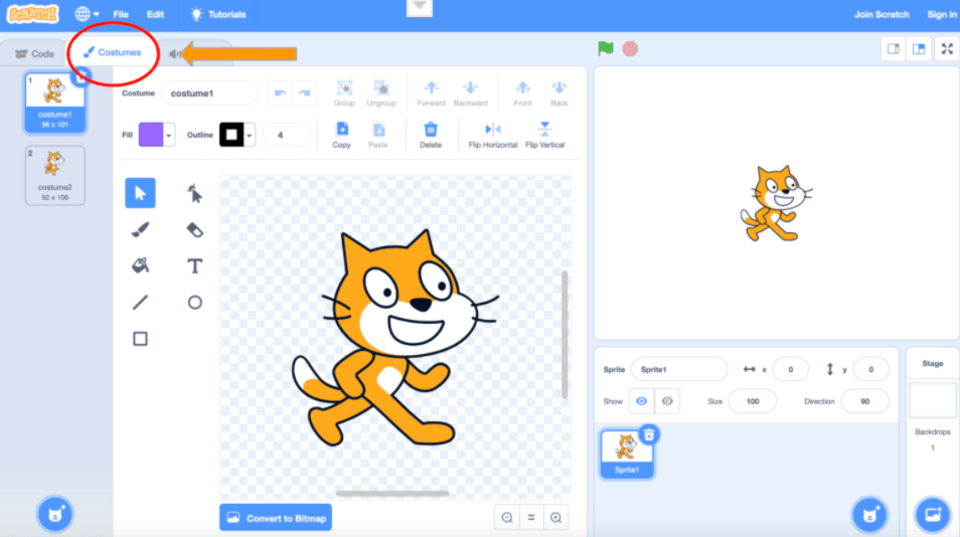
Try giving your child challenges to create different poses or clothes for their sprite.

2. How to hide your sprite
The show/hide blocks allow a sprite to appear and disappear on the stage. This can also be controlled in the “sprites” section of the screen, by clicking on the “eye” icons. Try having your child show/hide a sprite in the time it takes you to close your eyes and count to five.

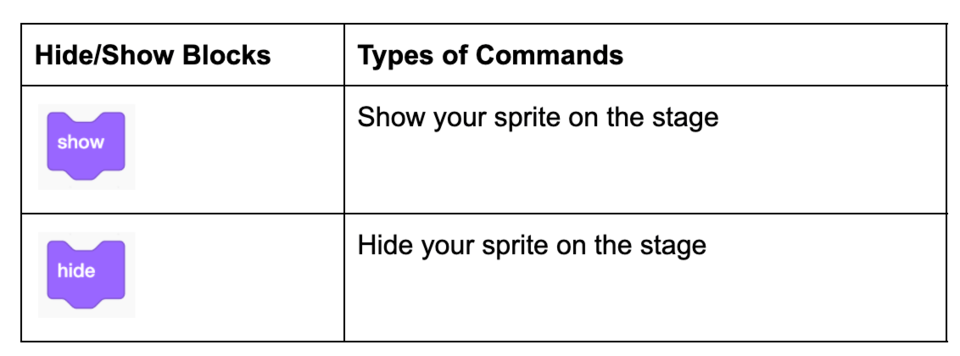
3. How to Create Motion: X & Y Coordinates
Some of the blocks refer to “x” and “y,” which shows the position of the sprite on a coordinate grid. The x value runs from left and right, while the y value runs up and down. Challenge your child to move their sprite to different locations on the coordinate grid.

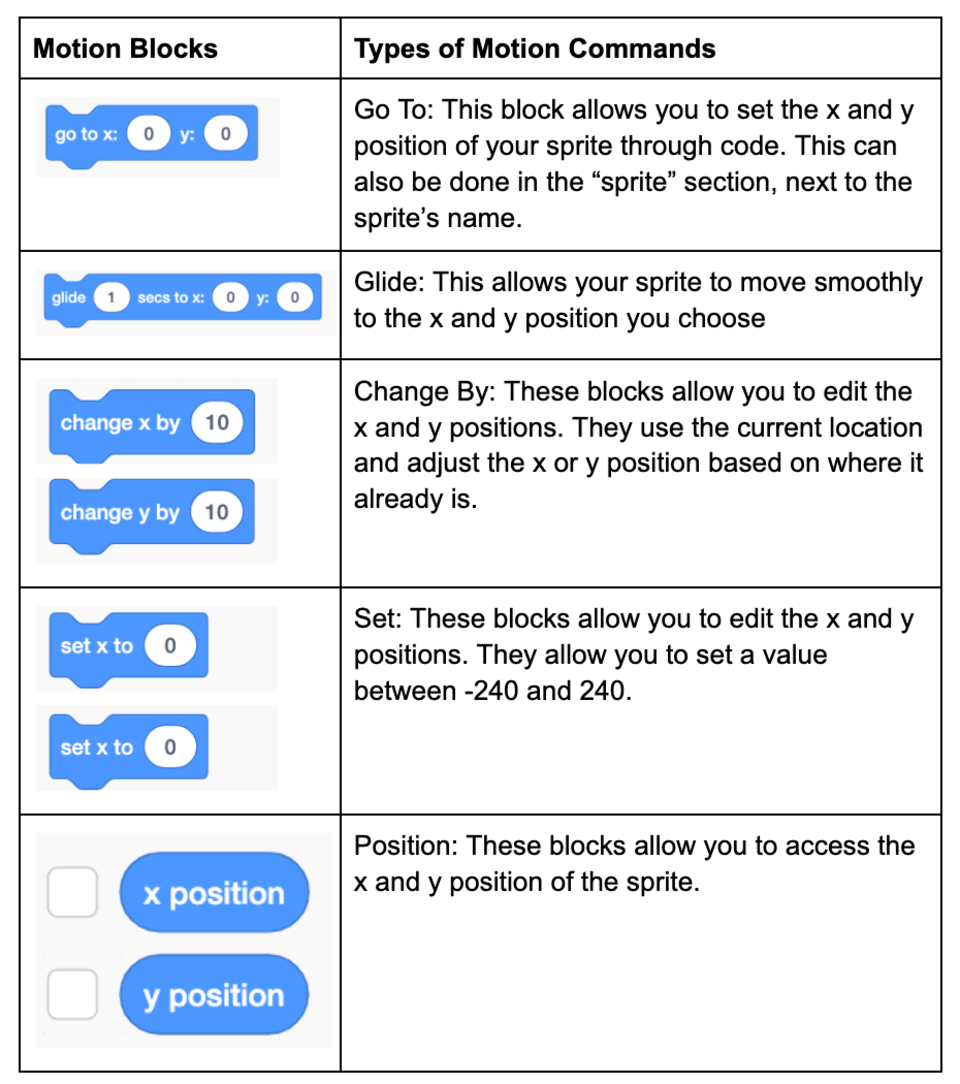
Building Logical Thinking Skills With Advanced Scratch Coding
Using Scratch helps your child to develop an understanding of coding, but it also helps them to build logical thinking skills. Let’s look at how using different blocks can help your child to experiment and develop these key skills.
1. How to control with conditionals
Conditionals allow you to run a certain piece of code if something happens during the project. The conditional block has a diamond shaped hole; we can fill this with a sensing block. Encourage your child to experiment with using different conditionals.

2. How to Use Variables
Variables in computer science are like a box, they hold values. With variables, you can change the value, name the value, and refer to the value. In Scratch, variables hold numbers. They can be used for a score, size, player number, or anything else you want! To create a variable, click on the “Make a Variable” button,give it a name, and click “OK!” Challenge your child to create and change variables, noting what happens.
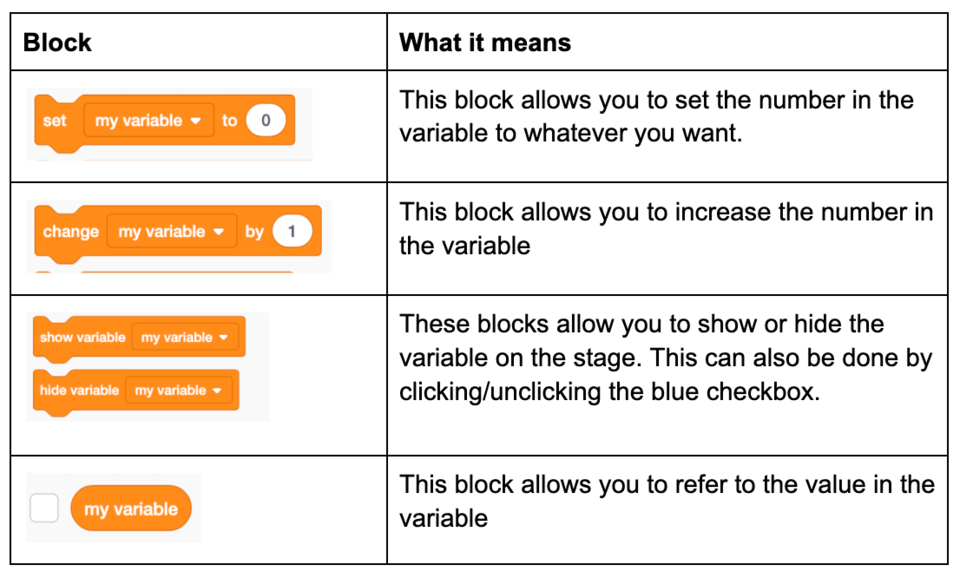
Explore Advanced Scratch Coding Blocks
1. What’s cloning?
Clones allow you to easily make a copy of the sprite. There are 3 blocks for cloning: they are found at the bottom of the “control” section.

(Note: the clone will show up on top of the original, so make sure you move the clone!)
2. How to code with extensions
The extensions allow you to add even more special code. Some of the extensions include a pen, text to speech, and music. To add an extension, click on the button at the bottom of the code, and select the extension you want to add. A brand new section of code will appear!
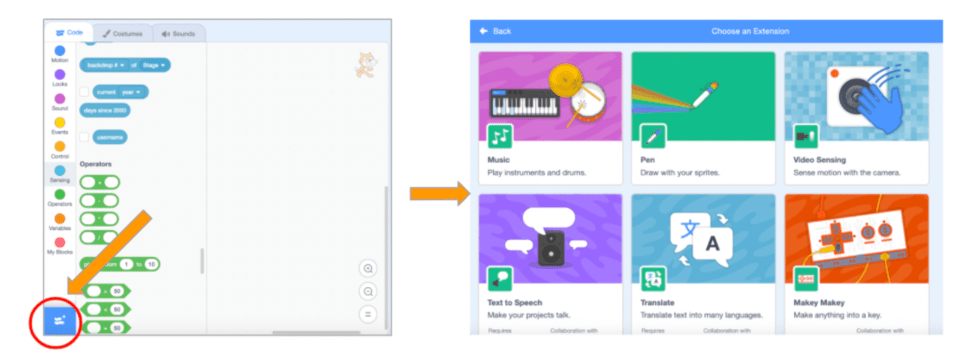
- Messaging: The messaging blocks allow your sprites to communicate with each other in code. Messaging is used to start running code in other sprites.
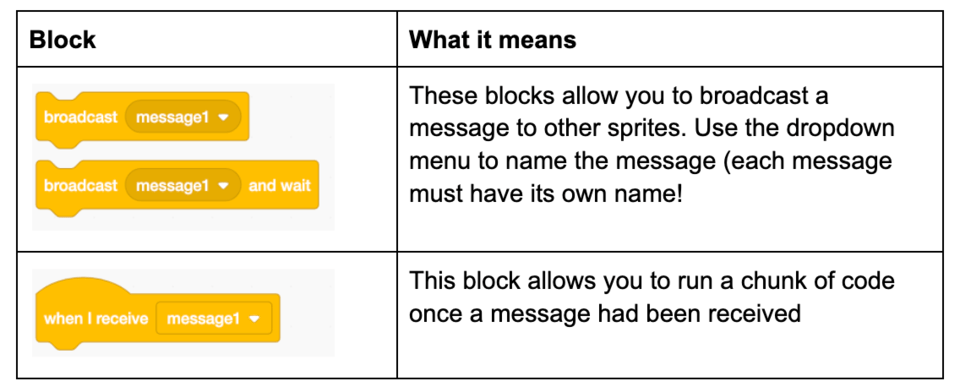
- Sensing: Sensing blocks allow you to interact with your project! We already have used some of the sensing blocks to create conditionals.

- Lists: Lists are similar to variables, but they can hold multiple values. To create a list, click on the “Make a list” button in the variables section and give your list a name. You should see a list appear on your screen, as well as a brand new set of code!
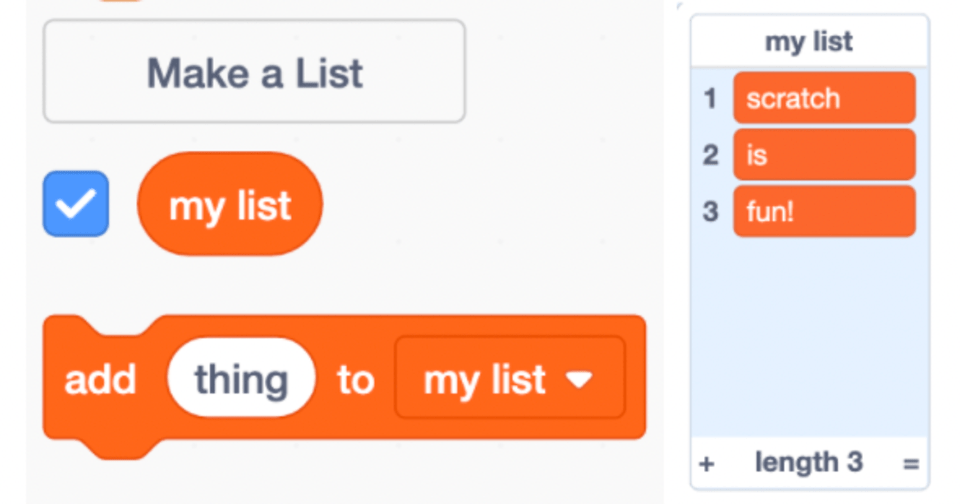
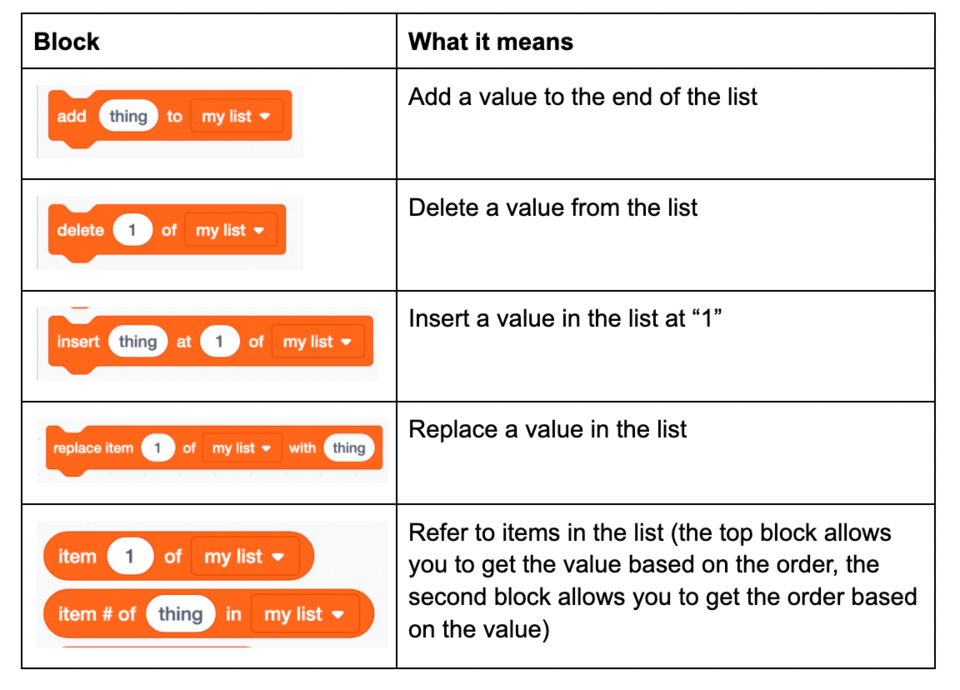
Does the order of Scratch coding blocks matter?
Your child has probably discovered that the order they write their code in matters. But to get different pieces of code to run at the same time, we can create separate chunk of code to run simultaneously. This is called parallelism, and it allows your code to do many things without getting stuck.
Sequential coding is when you put blocks together and they run one after the other. Maybe you want a sprite to say something while moving across the screen. To make your sprite perform these tasks at the same time, you want to code this separately under a “when green flag clicked.”
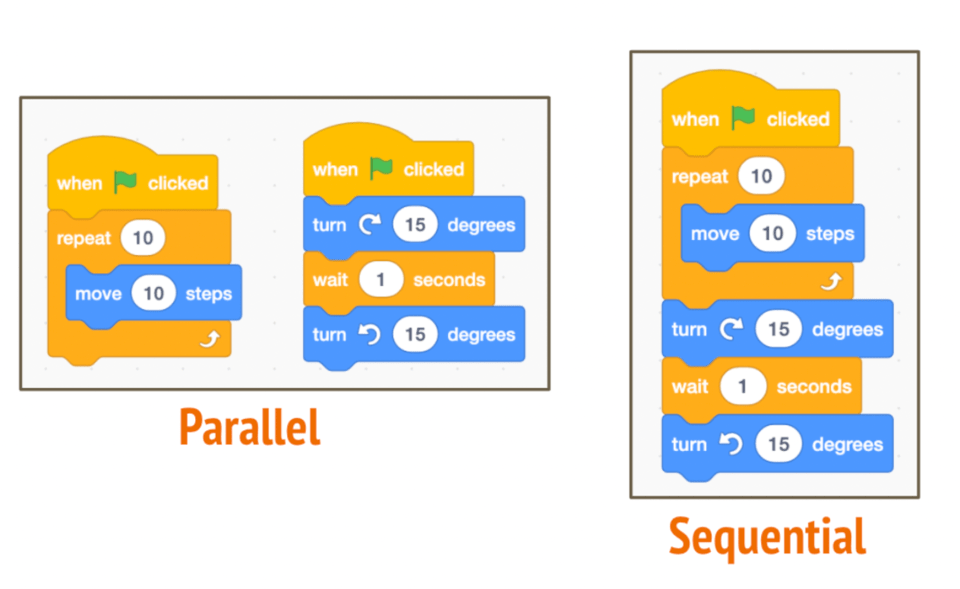
Practice With These Advanced Scratch Coding Tips
That’s it! Now you’ve got a foundation to help your child master some of the most challenging Scratch blocks.
Looking to learn more about coding for kids? Join our free introduction advanced Scratch class. Up next, see how to make a fun clicker game on Scratch.
Brought to you by Carolyn Qu, Instructor at Create & Learn



